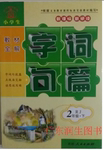题目内容
为了帮助中学生健康成长,某中学英文报开辟了“HEART-TO-HEART”专栏。假如你是该栏目的编辑Jamie,收到一封署名为Worried的求救信。信中该同学向你诉说了自己的困扰:近日容易发脾气,使正常的学习和生活收到了影响。请用英文给该同学写一封回信。
内容要点如下:
1.表示理解并给予安慰; 2.提出建议并说明理由。
注意:
1. 词数100左右;2. 信中不能出现与本人相关的信息;3.信的开头与结尾已为你写好,不计入词数。
参考词汇:temper脾气,情绪
Hi Worried,
I’m sorry to know that you are having such a bad time at the moment.___________________
___________________________________________________________________________
.
Yours,
Jamie
练习册系列答案
 教材全解字词句篇系列答案
教材全解字词句篇系列答案
相关题目

